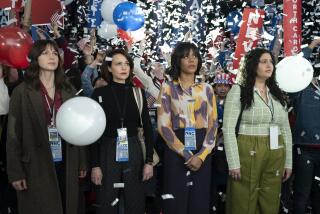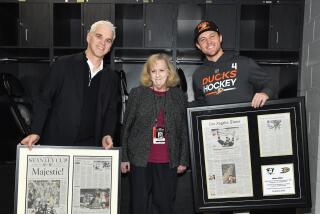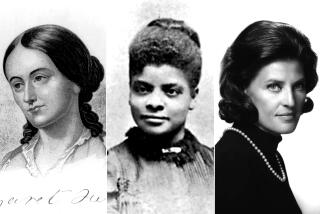Reporter spurred federal effort to hire more women
Vera Glaser, a veteran Washington reporter whose tough question to President Richard Nixon about the role of women in his administration led to changes in the recruiting policies in his administration, has died. She was 92.
Glaser, the Washington bureau chief for the former North American Newspaper Alliance syndicate of 90 newspapers and national correspondent and syndicated columnist for the old Knight Ridder newspaper chain, died Nov. 26 in Chevy Chase, Md. She had been battling Parkinson’s disease.
At a news conference with Nixon in February 1969, just weeks after he took office, Glaser noted that of his 200 presidential appointments at that point, only three had gone to women. “Can we expect some more equitable recognition of women’s abilities, or are we going to remain the lost sex?” she asked.
As a result of her question, the first systematic program to recruit women into federal executive positions was set up.
Glaser went on to write her definitive work, a five-part syndicated newspaper series about discrimination against women in employment and government policy.
She and Malvina Stephenson shared the “Offbeat Washington” column for five years and broke several important stories.
In June 1969, Glaser quoted FBI chief J. Edgar Hoover calling columnist Carl Rowan “racist” for raising objections to FBI wiretaps of political activists. In 1970, she and Stephenson wrote about Clark Mollenhoff, a special counsel to the White House, collecting the names of 250 State Department employees who criticized Nixon’s decision to expand the Vietnam War into Cambodia.
Glaser also served on presidential commissions having to do with women and the White House Fellows. She was a past president of the Washington Press Club, formerly the Women’s National Press Club, which was started in response to the prohibition against women in the National Press Club.
“She made a significant difference in the coverage of the women’s liberation movement,” said Kimberly Wilmot Voss, a journalism historian at the University of Central Florida. Women like her “worked behind the scenes. Their names might not be well-known, but they laid the groundwork, and she was on the forefront of writing about the women’s movement.”
Glaser’s daughter agreed. “She felt she was a voice for women in journalism when it was an uphill fight,” said the Rev. Carol Barriger, of Redwood City, Calif. Survivors also include three grandchildren and a great-grandson.
Born in St. Louis in 1916, Glaser became aware of gender discrimination when she graduated first in her high school class during the Depression. That typically meant a scholarship to the local Washington University, but a male student was selected. Decades later, she recalled, that snub and later workplace discrimination turned her into “a fighting feminist.”
In 1939, she married Herbert Glaser, who died in 1992. They moved to Washington, and she began publishing freelance pieces in magazines until joining the old Washington Times Herald in 1944. She worked for a series of news outlets, as well as on the staffs of Sen. Charles Potter, R-Mich., Sen. Kenneth Keating, R-N.Y., and the women’s division of the Republican National Committee.
During the 1960s and 1970s, she was with her newspaper syndicate and Knight Ridder, and in the 1980s worked at Washingtonian magazine. In the 1990s, she was a correspondent for Maturity News Service.
More to Read
Sign up for Essential California
The most important California stories and recommendations in your inbox every morning.
You may occasionally receive promotional content from the Los Angeles Times.










